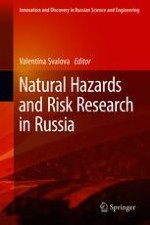2019 | OriginalPaper | Buchkapitel
6. Problems in Forecasting Dangerous Processes and Phenomena on the Base of the Earth Remote Sensing Data
verfasst von : M. A. Bolsunovsky
Erschienen in: Natural Hazards and Risk Research in Russia
Aktivieren Sie unsere intelligente Suche, um passende Fachinhalte oder Patente zu finden.
Wählen Sie Textabschnitte aus um mit Künstlicher Intelligenz passenden Patente zu finden. powered by
Markieren Sie Textabschnitte, um KI-gestützt weitere passende Inhalte zu finden. powered by
